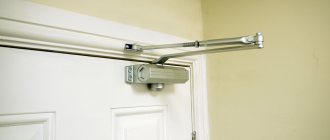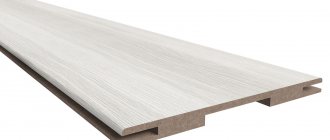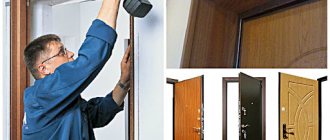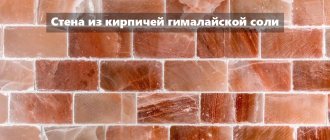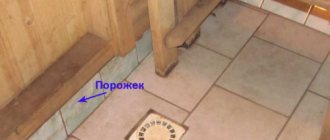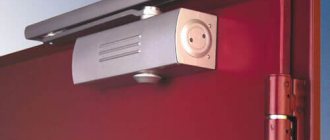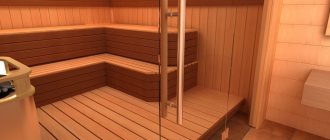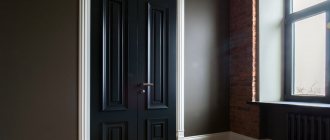To ensure that the gate is closed all the time and does not require any effort, a special device is installed. Once upon a time it was a simple spring. It was attached with one edge to the frame of the gate, and the other to a pillar or wall of the house. But if the spring was tight, you had to “slip” through the gate or hold it from behind with your hand. Otherwise, you could have gotten the sirloin. Today, such “conveniences” no longer suit anyone. To keep the entrance closed, install a door closer on the gate. This is still the same spring, but with additions that allow you to adjust the speed at which the gate will close.
Closer device
Almost all mechanical devices for automatically closing a door/wicket/gate are spring-based. And the closer is no exception. Its main components:
- a spring installed in a housing filled with oil (in the photo the oil is red, the spring is visible);
- gear to which the rod (lever) is attached;
- piston with a gear rack (the piston is in the photo on the left, and the rack is inside it).
How does a door closer work
? How does it all work? When we open the doors, the lever transfers our force to the gear. It begins to roll along the toothed bar, moving the piston. And he, in turn, compresses the spring. After we release the doors, the spring begins to expand, pushing the piston back. The gear rolls back to its original position and the doors close.
This is what a gate closer with knee (elbow) traction looks like
To prevent the spring from compressing too quickly, the housing is filled with oil. When the door is closed, it gradually flows into the piston. To slow down the door, special channels are made. They are called bypass. They are the ones who prevent the door from slamming quickly. These channels contain adjusting screws, with the help of which the speed of closing the gate is regulated.
Closers with a cam mechanism instead of a gear
Gear closers were the first to appear. Their main drawback is their not very presentable appearance. It is spoiled by protruding lever bars, and not everyone likes this. Later, when versions with a sliding gear (sliding channel) appeared, the gear was not able to transmit the opening force effectively enough. This led to the fact that not everyone could open the doors.
A more presentable gate closer with no sticking out lever
We found a solution. Instead of a gear, a cam mechanism was installed. This contributed to a more efficient transmission of opening force. The power transmission is, on average, even higher than that of gear models. The advantage of these models is the absence of that very protruding “knee”, and the disadvantage is the price. Another drawback is that such models do not work with heavy doors. For a small gate with light filling it is still possible to find one, but for a massive one it will no longer be possible.
Door closer with cam force transmission
How does a sliding channel closer work? The cam (can be symmetrical or asymmetrical) is installed between two cylinders - the opening (working in another terminology) and the brake (damping) cylinders. The spring is behind the opener. When we push the sash, the cam moves, compressing the working spring, and the damper piston “stretches” behind the cam. After the opening force is removed, the spring begins to straighten. She pushes the cam back, and it pushes the braking piston. So it turns out that the second cylinder slows down the closing.
Pneumatic or hydraulic
There is another type of door closer for the street - pneumatic. It appeared more than 100 years ago. This is a spring that is sealed in a metal casing. A lever is welded to it, which is usually attached to the sash. The design is very simple, the price is very low.
Pneumatic valve is good for cold climates
So maybe it’s better to install pneumatic closers on the gate? In general, this option is not bad, but far from ideal. You have to choose according to the situation. Here are the main points:
- Hydraulic models have adjustment capabilities, but the speed at which the shutter closes depends on the temperature. This means that adjustments are required as the weather changes.
- The operation of pneumatic ones does not depend on temperature, but they cannot be regulated. If you choose the wrong model (the door or gate closes too quickly or too slowly), there is nothing you can do about it.
- Pneumatic ones are more massive.
- The price of pneumatic closers is higher because the production technology is more complex (it is more difficult to ensure tightness).
In short, for regions with very cold winters, the best choice is to install a pneumatic door closer on the gate. For regions with milder climates, use your discretion.
“Their” and “our” standards
All closers for internal doors or for outdoor gates, manufactured or imported to Russia, must comply with GOST 56177-2014. We are interested in devices with code DN (overhead), possibly DF (with additional functions, such as a delay before closing). After the letter code there are numbers and letters. What do they mean? In order:
- grade (from 1 to 7). The greater the moment of inertia, the higher the class (from the table it is found based on the measured mass and width of the web);
- reliability (from 1 to 3);
- Possibility of use in fire doors (need 1, meaning “yes”);
- application in different climates. Code N (normal) – from -15 to +40. Code M (frost-resistant closers for gates) - will work below -15;
- corrosion resistance. 1 - highest;
Overhead model with delay function before closing, for a door with a width of 1000 mm. weighing 55 kg, class 1 in terms of reliability, for frosts down to -20, maximum corrosion resistance will have the code DNDF311M1.
In Europe, the EN 1154 standard is used, which also defines 7 classes according to moments of inertia. Inexpensive models are produced in one class, for example EN 2. Those that are adjustable will have a code like EN 2-4.
It is advisable: do not buy a mechanism “with a reserve”. This will not add durability, it will just require more force to open. If instead of one mechanism you purchase two that will stand on the same axis, then this increases the efficiency not by half, but by 30%.
Additional functions of door closers
There are currently five additional features that enhance the usability of the door closer. Whether additional functions are needed for a door closer is up to you to decide. Without them, everything will work, but some nuances of use will be a little worse.
- Locked in open position . Quite a useful feature for doors. You can “lock” them in the open position to bring something in, for example. To do this, you need to open it to a certain angle (more than usual). The doors will remain in this position. You can close them by slightly pushing them in the direction of closing. But, in case of installation on a gate, this function is not very relevant. To bring in something heavy or bulky, you can open the gate.
- Delayed closing. This is when the doors remain open for some time (20-30 seconds), and only after this pause they begin to close. It’s convenient if someone comes in “slow-moving” or with bags in their hands or with a stroller. If there are elderly people in the family, or a new addition is planned, this can be a useful option.
Additional functions and adjustment options - Wind brake . Devices with this option prevent the door from opening too quickly, which can happen due to strong wind or shock. This function is implemented using an additional circuit for oil movement. Screws are built into it, with the help of which the maximum opening speed is selected. In regions with strong winds, installing a wind brake closer on the gate is a great idea.
- Adjusting the clap speed. The speed of movement of the sash is not the same. The last 15° it increases. This is done to overcome the resistance of the door latch. Experts call this function “slamming”; it can be useful to be able to regulate it. For example, when replacing a lock/latch.
What adjustments can be made depends on the model - Thermal flap . As the temperature drops, the oil becomes more viscous, causing the gate to move more slowly. As the temperature rises, on the contrary, the movement accelerates. This can be solved by seasonal adjustment, and a thermal shutter helps to avoid adjustment. This is a special valve arrangement that compensates for changes in oil fluidity. Quite a convenient thing, especially for gates.
Operational Requirements
Well, the most important thing! If your gate or its hinges are installed poorly, that is, there are distortions or the hinges are noticeable, then the service life of the closer is significantly reduced.
It is recommended to install mechanisms that fully comply with the characteristics of the gate. Powerful closers will make it difficult to open a light gate.
It is important to fulfill all operational requirements:
- It is not recommended to make efforts to close the sash faster;
- any objects inserted into the opening in order to hold the sash open lead to damage to the mechanism;
- You should not unnecessarily close and open the doorway. Children often play games involving fencing structures.
It is extremely rare that the device can be repaired; more often it has to be replaced. Like any other mechanism, the closer requires careful treatment, and in gratitude it serves its owners for a long time and without fail.
Installation methods
There are open and hidden door closers. Open - overhead models of both types (with gear and cam). Hidden installation is possible in the floor, in the door leaf or in the door frame. There are also door closers built into the hinges.
If we talk about a door closer for a gate, hidden installation models include those built into the frame or into the door leaf. Using hidden-mounted models for gates is not a bad idea. With this option, intentional failure is unlikely, but the cost will be considerable. Also, a hidden door closer must be installed and repaired by a specialist. Their services are also not cheap.
Concealed door closer for gate with installation in the sash frame
Hinged door closers can be used for lightweight gates. They are not designed for heavy weight. Disadvantages of this option: little possibility of adjustment, decent price, inability to use with gates/doors of large mass.
That’s why regular – knee/lever – closers are often installed on gates. The deciding factor is usually price. Only when choosing, pay attention to the temperature range of use. It should cover about 20% of seasonal variations in your region.
For gates without a top bar
All of the models described above include a door frame or top crossbar for wickets and gates. But not all wickets (and not even all gates) have this same crossbar. How then to mount the door closer? In principle, you can install it “wrong” by attaching the lever to a pole or wall located nearby. But, in this case, you lose the warranty. To be fair, it should be said that warranty claims in this group are very rare.
There are closers that are specially designed for gates without crossbars. And the choice is no less:
- Vertical hydraulic or pneumatic closer. The principle of operation is slightly different and the spring is used not for compression, but for torsion. They are installed on a pole and can have an opening angle of no more than 90°. So it's not an option for everyone.
Vertical models for installation on a gate without a top crossbar - Closers for gates without crossbar . These are modified models with a specially shaped rod. They also consist of two parts. One is mounted on the sash, the second can be: mounted on a pole;
- with installation on a wall (brick pillar);
- hidden installation - built into a profile (not many options, but they exist).
Hydraulic closers for installation on a gate without an upper lintel with mounting to a pole and wall
Hinged door closers are a good choice, but the weight of the gate should not exceed 75 kg
The easiest way is to install a closer on the gate in the form of hinges. In general, everything is clear here, it is only necessary that the pillar and the canvas be strictly vertical. And the appearance is not annoying. The disadvantage of this option is that such devices are not designed for large masses. Usually the limit is no more than 75 kilograms.
Vertical closers and special ones for gates have approximately the same installation complexity and comparable price (this is if we are talking about products from the same manufacturer). Look for the option that meets the weight and operating conditions.
Service
The basic rules for servicing and caring for the device are as follows:
- If there are obstacles to the normal operation of the closer, they should be eliminated;
- A gate with a closer cannot be left open for a long time, as this leads to wear on the mechanism;
- Due to seasonal temperature fluctuations, street closers need to be adjusted twice a year;
- All rubbing and rotating parts should be regularly lubricated with special lubricants.
Maintenance process for a gate closer
In order for the mechanism to serve for a long time and efficiently, it should be operated in strict accordance with the manufacturer’s recommendations. Timely maintenance will also significantly improve the life of the closer.
Briefly about the selection rules
Now we will not talk about the choice of parameters and additional features, but about the general principles of selection from the point of view of technical characteristics. There are three main selection criteria:
- Wicket size.
- Its mass.
- Installation method.
There are special models for glass doors.
First of all, decide how you will install it. Then search by combination of size and mass. If you don’t have an exact “hit” in terms of weight, take a device that is designed for a slightly larger mass. You don't need too much stock. It will not affect durability, but the price of devices for heavier gates increases significantly.
At the same time, it’s also not worth taking a door closer designed for less weight. This saving will manifest itself in the fact that the device will not work well (it will close too slowly) or will quickly break down.
About the manufacturers
A few words about the manufacturers. European door closers are reliable, but expensive. But the quality and appearance are without question. Complaints are very rare - less than 1%. Russian ones are more or less normal in price and, usually, acceptable in quality. The appearance may not be bad. Both there and there, if it is stated that they work at -30°C, then this is really so.
As usual, it’s not easy with Chinese gate closers. Only a few have actually been tested at low temperatures and have a test report or certificate about it. And they will work fine in winter. If there is no certificate, even if it is written that they will work even at -50°C, this is far from a fact. We need to look for reviews from real users of these models. Moreover, specifically the models, since another modification may not work, or even a different batch. In general - depending on your luck. As is usually the case, prices for Chinese door closers are more affordable.
What should he be like?
There are a number of requirements for this mechanism. And this is not surprising, because its operation is not carried out under favorable conditions. On the street, this mechanism is under constant influence of the environment.
Rain, dampness, snow and much more. So, it must meet the following parameters:
- High strength of the mechanism. This is an important requirement, because it is constantly under the influence of mechanical load.
- Frost resistance. If the air temperature drops, it should continue to function.
- Moisture resistance. Moisture has a negative effect on such mechanisms. Do-it-yourself grave fences? Therefore, the street closer must cope with it.
Installing a gate closer
Any door closer comes with installation instructions. It describes all possible installation options and their features. Mounting templates for all methods are also included. Templates are made in full scale. They must be placed and secured according to the instructions. Then, either make marks (on a wall or a brick pillar) for drilling holes, or put marks on metal parts.
Opening angle may depend on installation
After this, the template can be removed (it is also permissible to drill through the template - so as not to make a mistake). Drill holes according to the marks for installing fasteners. All diameters are indicated; the fasteners themselves are usually included in the kit. Dowels must be installed in the wall or brick pillar.
How to install a door closer: instructions with photos
Next, we install and secure the parts. If the lever is connected, unscrew the nut and mount two separate parts. One is attached to the frame/post/wall, the second is attached to the sash.
The last stage of installing the closer is fastening the lever. First you need to choose the correct length. It should be such that after connection the lever is perpendicular to the door. In this case, the closer will work normally and will not jam or close too quickly. There will also be less wear and tear. In general, it is important to set the correct length of the lever. You may have to change the length several times.
The final steps of installing a wicket door closer
When the correct length of the lever is selected, we combine the ends, install a special bolt and nut with spacers (all included). Sometimes the lever has its own connection that you just need to “click” into place. This means that you need to align the corresponding edges of the levers and press down until they click. That's all. Next, you will only need to adjust the closing speed and other parameters that the model you choose allows you to adjust.
General rules
How to install the mechanism correctly? The installation process is simple. Anyone who has the necessary knowledge, skills and abilities can carry out the work.
When choosing and installing, you must follow the instructions
When choosing a door closer, you need to clearly know the conditions under which it will operate. The main criterion when choosing an outdoor mechanism is frost resistance. It should also be insensitive to snow, rain and hail. The door weight must be appropriate.
The instructions are:
- Carefully select the elements that will be responsible for fastening the structure. It is important to consider the force that a person applies when the door opens and closes. If the load on the sashes increases, the same happens with the fasteners.
- Particular attention should be paid to the power of the screws. If they are weak, it is recommended to replace them with stronger ones.
- The wicket door closer must not conflict with the class of purpose. A mechanism intended for indoor use should not be used outdoors. Otherwise, serious problems may arise that require large financial investments.
- Once the product is installed, there is a need to adjust it. This must be done in accordance with the instructions that come with the kit. A standard screwdriver is usually used to adjust the mechanism. If the door closer is equipped with a locking function, this also needs to be configured. To do this, a special nut is tightened on the lever. It is this part that is intended to hold the sash.
Important! A template, applied in the desired area of the crossbar, is included with the mechanism.
Its fastening is carried out according to the markings on the template.

